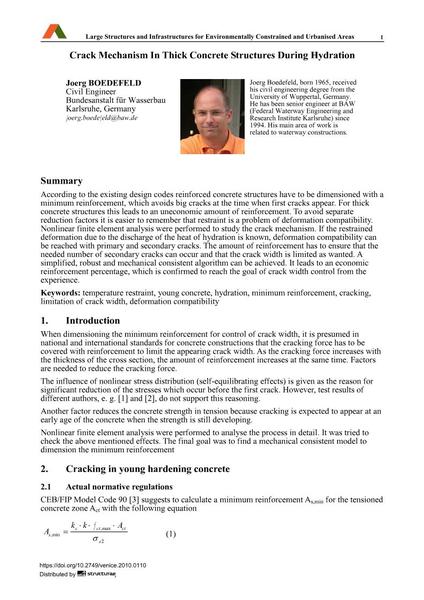Crack Mechanism In Thick Concrete Structures During Hydration

|
|
|||||||||||
Bibliographic Details
| Author(s): |
Jörg Bödefeld
|
||||
|---|---|---|---|---|---|
| Medium: | conference paper | ||||
| Language(s): | English | ||||
| Conference: | IABSE Symposium: Large Structures and Infrastructures for Environmentally Constrained and Urbanised Areas, Venice, Italy, 22-24 September 2010 | ||||
| Published in: | IABSE Symposium Venice 2010 | ||||
|
|||||
| Page(s): | 110-111 | ||||
| Total no. of pages: | 8 | ||||
| Year: | 2010 | ||||
| DOI: | 10.2749/venice.2010.0110 | ||||
| Abstract: |
According to the existing design codes reinforced concrete structures have to be dimensioned with a minimum reinforcement, which avoids big cracks at the time when first cracks appear. For thick concrete structures this leads to an uneconomic amount of reinforcement. To avoid separate reduction factors it is easier to remember that restraint is a problem of deformation compatibility. Nonlinear finite element analysis were performed to study the crack mechanism. If the restrained deformation due to the discharge of the heat of hydration is known, deformation compatibility can be reached with primary and secondary cracks. The amount of reinforcement has to ensure that the needed number of secondary cracks can occur and that the crack width is limited as wanted. A simplified, robust and mechanical consistent algorithm can be achieved. It leads to an economic reinforcement percentage, which is confirmed to reach the goal of crack width control from the experience. |
||||
| Keywords: |
cracking hydration young concrete deformation compatibility minimum reinforcement temperature restraint limitation of crack width
|
||||
